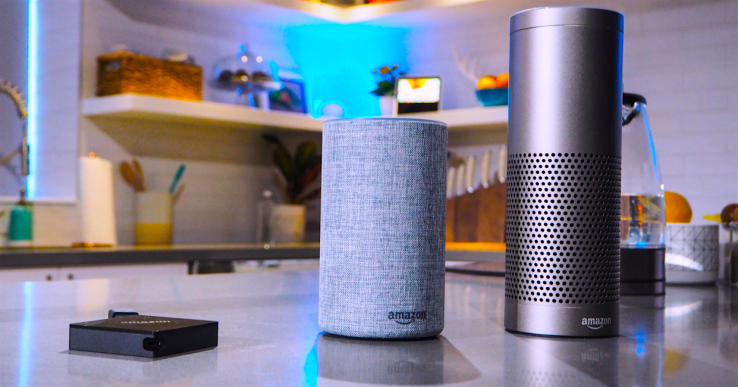

Consumers are starting to give Alexa’s voice apps, called skills, more of their attention. During CES this week — where Amazon is battling for attention with Google Assistant across the consumer technology spectrum on display here — the company detailed a few new numbers related to skill adoption and new ways they’re helping consumers find skills they’d like.
While Amazon a few days ago noted in a blog post that Alexa now has more than 30,000 skills available worldwide, it hasn’t shared much in terms of whether the skills are actually seeing much use.
The company still isn’t sharing hard numbers related to skill installs, or day-to-day usage, but it is offering at least a tiny peek under the curtain.
According to numbers shared by vice president of Alexa Voice Services and Alexa Skills at Amazon Steve Rabuchin at CES, Amazon last year launched over 100 tools and features aimed at skill developers, and skill usage is now on the rise as a result of the improvements in developer technology.
Specifically, skill engagement has increased by 50 percent year-over-year, and it’s up nearly 75 percent since last January.
Now, Amazon is focusing on making sure the ecosystem rewards skill developers for their efforts, while better exposing skills to end users, as well.
The company has paid out “millions” to developers in 22 countries, including the U.S., the U.K. and Germany, since the launch of the rewards program in May, which pays top skill developers for building engaging skills.
It also added in-skill purchases and subscriptions.
Amazon last fall rolled out new ways to help consumers find those skills, too. For example, Alexa learned how to suggest skills to Echo owners when they asked a question that the assistant itself couldn’t do. (Yes: “there’s a skill for that.”)

“When you ask for something, even if you don’t know there’s a skill there, we try to match that skill to your request so you’re not left with an unfilled request,” Rabuchin said. “Over time, you shouldn’t have to think about the skill, or know how to use it, you should just be able to talk to Alexa.”
In more recent days, Amazon expanded its ability to recommend skills even further.
“There’s certain games when you finish the game, we will suggest another game,” he said. “So far, it’s been relatively well-received by customers…it’s no different than when you’re on Amazon shopping — you’re looking at a camera, and [the site informs you] people who liked this camera also looked at these other cameras,” Rabuchin added.
Skills, of course, aren’t Alexa’s only capabilities. At CES, Amazon is pushing its way into the smart home space, too.
Heading into CES, there are more than 50 third-party Alexa-enabled devices available to customers, with many more coming, and there are more than 4,000 smart home devices that can be controlled with Alexa, from more than 1,200 unique brands, Amazon also told us.
Customers have connected tens of millions of smart home products, as well.

